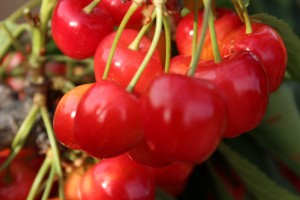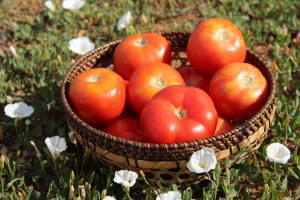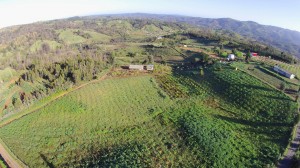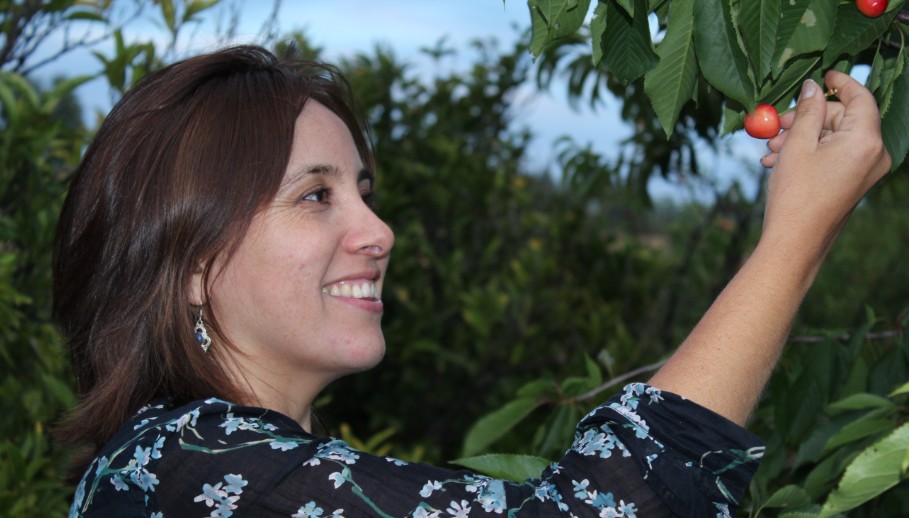Genetically modified foods (GM food or GMOs) have been a source of nutrition and debate for over two decades now in Chile. China introduced a genetically modified tobacco as far back as 1992, and two years later the United States saw the commercialization of the GM species recognized as the slow ripening tomato, known by its patent name: Flavr-Savr®.
Since that time, certain countries around the world have been producing, consuming, importing, and exporting an ever-expanding variety of  “transgenic” fruits and vegetables with fish and other animals coming soon. Chile is one of more than 28 GM food producing countries, and just as the debate concerning the environmental and health benefits and safety risks has polarized members of the agricultural industry here, so has the Chilean government wrestled with a unified direction towards its GM production regulations.
“transgenic” fruits and vegetables with fish and other animals coming soon. Chile is one of more than 28 GM food producing countries, and just as the debate concerning the environmental and health benefits and safety risks has polarized members of the agricultural industry here, so has the Chilean government wrestled with a unified direction towards its GM production regulations.
The laws regulating GM crop production in Chile are generally interpreted in this manner: agricultural businesses are permitted to cultivate GM seeds for export to markets such as the United States. However, GM seeds cannot be grown for domestic consumption. This policy ambiguity is protective of a perceived domestic risk while simultaneously condoning its development within the borders of the country. Chile has created a regulatory double standard along with the deregulation of imports containing GMO ingredients used in the fabrication of processed foods. To add to the confusion,  the lack of GMO labeling on domestic food products exposes the Chilean public to the same risks they would have faced without any regulations in the first place.
the lack of GMO labeling on domestic food products exposes the Chilean public to the same risks they would have faced without any regulations in the first place.
Essentially, Chile has become a southern hemisphere, off-season GMO laboratory where genetically modified seeds are grown, tested, and exported to food processing facilities in other countries only to be imported as processed foods devoid of GMO labels, months or years later. This rather obvious hole in Chilean GM food policy making can be difficult to understand outside the broader debate of the benefits and dangers of genetically modified organisms.
On the one hand, GM proponents argue that their products provide disease, pest and herbicide resistance leading to higher yields and longer shelf life, as well as tolerance to harsh environments, nutritional improvements, and even the ability to vaccinate and treat illness with so-called “pharma crops”. With a list of benefits this profound, one might wonder how there could be a debate concerning the value of GM food.
 In fact, the positive attributes of GM products are the reason for their proliferation throughout the world. However, to overlook the long term implications and effects caused by the genetic manipulation of the organisms that constitute our food supply would be very unscientific and irresponsible.
In fact, the positive attributes of GM products are the reason for their proliferation throughout the world. However, to overlook the long term implications and effects caused by the genetic manipulation of the organisms that constitute our food supply would be very unscientific and irresponsible.
Many point to the relatively short span of time these products spend in the lab being tested before they are approved and make their way into the fields to be planted and eventually consumed by both farm animals and humans. It stands to reason that the human body would be able digest these new types of food just as it is able to digest new foods encountered when traveling in foreign countries, but does that mean they are safe and non-toxic if they are consumed often and over a long period of time? We know what happens to the liver after  a long life of drinking alcohol. Are we to assume that a long life of eating BT corn, which produces a toxin that breaks open the stomachs of the insects that eat it, will be safe and free from side effects?
a long life of drinking alcohol. Are we to assume that a long life of eating BT corn, which produces a toxin that breaks open the stomachs of the insects that eat it, will be safe and free from side effects?
If we look further down the road, say, three generations from now, the effects may be even more daunting. According to a study by Russian biologist Alexey V. Surov, hamsters that were fed the same GM soy that makes up 91 percent of the soy sold in America, after three generations mostly lost their ability to have babies and the pups that were born had a high mortality rate. This study alone should be enough to take pause and consider the products being fast tracked into the food supply.
Human health risks are often cited as a need for additional scrutiny pertaining to GMO’s, but larger environmental concerns have also surfaced in the ongoing debate. Chile has been home to legal battles fought over the secrecy surrounding the locations of the GM seed producing farms. Mainly led by bee keepers and organic farmers, the risks of cultivating GM seeds  alongside non-GMO species and cross-pollination with Chile’s “organic” agriculture was brought to light by the discovery of GM pollen detected in “organic” Chilean honey exported to the European Union in 2012. This fact is further exacerbated by the claim among many GM detractors and scientists, alike, that the huge die-offs of bee colonies in North America are due to their exposure to GM products treated with neonicotinoid pesticides.
alongside non-GMO species and cross-pollination with Chile’s “organic” agriculture was brought to light by the discovery of GM pollen detected in “organic” Chilean honey exported to the European Union in 2012. This fact is further exacerbated by the claim among many GM detractors and scientists, alike, that the huge die-offs of bee colonies in North America are due to their exposure to GM products treated with neonicotinoid pesticides.
Chile is not unique in the world. The ecosystems that make up the world’s natural environment know no borders. Government policymakers weigh any number of variables when implementing regulations in their respective countries, not least of which are market  concerns and factors that affect public health. It is going to take years of study and sacrifice for Chile and all governments around the world to help us survive and flourish in this new Transgenic Age. The balance between economic survival and actual human survival may perhaps be more fragile than people have been willing to admit.
concerns and factors that affect public health. It is going to take years of study and sacrifice for Chile and all governments around the world to help us survive and flourish in this new Transgenic Age. The balance between economic survival and actual human survival may perhaps be more fragile than people have been willing to admit.
It is not difficult, then, to understand Chile’s schizophrenic GM policies. GM products are touted as having the potential to cure hunger and disease by one group, and as having the potential to devastate and depopulate the planet, and everything in between. GM policymaking is surely a difficult task. To be sure, Chile’s genetically modified policymaking conundrum is but a small reflection of a great challenge facing the entire world.
Analysis by Jay Verkamp
Photos: Jay Verhamp
Selected Sources:
